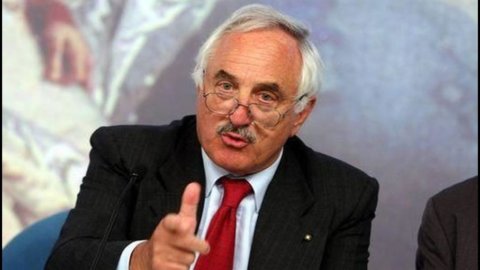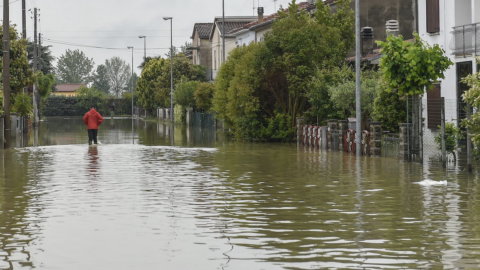“After reaching the historic milestone of one billion euros in 2010, 1.075 million to be exact, we expect further growth in turnover this year of between 10 and 15% with investments of around 100 million”. And those indicated by Matteo Tiraboschi, in his first interview after his very recent appointment as executive vice president of Brembo, are development estimates based on prudence, considering that the first quarter of the current year has already closed with revenues up by 27,9 % to 312,2 million and a net profit increased by 68,6% to 11,2 million, practically a third of that achieved in the whole of 2010 (32,3 million with a dividend distributed in May of 0,30 euro).
The investments give a sense of the global nature now acquired by Brembo: from the doubling of the foundry in Poland to the restructuring of the one acquired last year in Nanjing in China; from the new aluminum brake caliper plant in Ostrava in the Czech Republic to the expansion of the current plant for the production of motorcycle braking systems in Pune in India.
The promotion of Tiraboschi, who has also been financial director since 2009, to executive vice president - to whom the new managing director Andrea Abbati Marescotti (formerly Fiat group) reports - was decided and explained by Alberto Bombassei, the company's historic president as well as majority shareholder with 56,5% through Nuova FourB, to strengthen the top management team and gradually launch the succession mechanisms. A decision that has thrilled all the 6 employees of the group, in Europe, America and Asia, but above all the headquarters in Stezzano, on the outskirts of Bergamo, in the futuristic "Red Kilometer" technology park, strongly desired by Bombassei himself , happy union between industrial innovation and architecture. “Bombassei is a Brembo asset that fortunately cannot be written off”, underlines Tiraboschi, who is Bombassei's son-in-law having married his daughter Cristina, who is also involved in the company in executive roles. That at 70 years of age, 50 of which spent making Brembo the world leader in braking systems for high-performance motorcycles and cars, from Porsche to Ferrari, from Ducati to Harley Davidson, the president wants to carve out for himself a more strategic and less operation is written in the official deeds of the board of directors dated 6 June, but it is not even imaginable that Bombassei would give up being that volcano of ideas that he has always been, with his demanding enthusiasm that he transmits to everyone in the company, an enthusiasm and passion that last for over half a century.
Bombassei was 20 years old when his father Emilio immediately wanted to take him with him to the small company he founded with Italo Breda: the Sombreno mechanical workshops, the original nucleus of today's Brembo. It was 1961. First works for Alfa Romeo, then just three years later the first disc brakes were born, until then exclusive to Great Britain. Brembo then had 28 employees including the founding partners. In 72, the brand from the Bergamo company also appeared on motorcycles for the first time with a supply to Guzzi. Bergamo will soon become the leader in the segment of braking systems for two-wheelers. The technological consecration takes place a few years later when Enzo Ferrari entrusts the Rossa, the most prestigious car in Formula One, to the care of Bombassei.
It was 1975: Brembo has 146 employees with a turnover of 2,8 billion (ie 1 million euro). Innovation and research are the trump card of the company, small but increasingly aggressive, which in 44 launched a brake caliper for cars with a new design and the material, aluminium, which will lead Brembo to become the first supplier, if not exclusive as in the case of Porsche and Ferrari, for high performance cars. We are in the eighties, the world has absorbed and put the long oil crisis of the previous decade behind it: Brembo has now collected many awards and successes but its size is still too small to dominate in an economy that is starting to be increasingly global .
Thus Bombassei, in order to guarantee his company the necessary international leap, in 1983 renounced being "owner" in his house and opened the capital to the Americans of the multinational Kelsey-Hayes who became the controlling shareholders with Bombassei who as entrepreneur and first shareholder assumes the role of manager employed by others. “Every month – recalls Tiraboschi – he flew to the USA to report on Italian activities. But that was an experience, as he himself acknowledges, that allowed him to live and breathe the air of a large company, leading Brembo to deal with the complexity of a multinational and a new world to get to know and perhaps to conquer . At the same time it made the entrepreneur Bombassei understand how important a strong management was to govern the company, with whom to discuss ideas and choices once he regained ownership of his company, repurchasing the majority stake sold to the Americans in 1993 ”. Two years later Brembo enters the Stock Exchange and has been distributing dividends punctually for 16 years.
It was 1995: the company now had 1.115 employees and a turnover of 331 billion lire (about 170 million euro). With the listing on the Stock Exchange, a strategy of growth and internationalization is inaugurated which will bring Brembo to its current size, with 35 plants in 15 countries on three continents and with an ever more accentuated focus on development and research (“R&D spending – declares Tiraboschi – today it is about 6-7% of annual turnover, a respectable figure in the automotive field”).
We arrive in 2000: the Bombassei group has 2.800 employees with a turnover of 887 billion lire (458 million euros). Figures that will more than double in 10 years, also thanks to a flurry of acquisitions and targeted alliances, from the British Ap Racing to Marchesini, specialized in magnesium wheels for motorcycles, up to the landing in China, India and Brazil. The latest operation concerns the acquisition in May of Perdiel, an Argentine brake disc company, with a turnover of approximately 20 million, with an outlay of 3,3 million. "It has been a continuous growth - observes Tiraboschi who has been on the board of directors of the company since 2002 - which only had a violent stop in 2009 with a 25% drop in turnover and the stock on the Stock Exchange which had dropped from the historical highs of 13 euros below 3 euros. It was practically as if a quarter's activity had failed. What's more, it was an unexpected crisis which also hit the top of the range for the first time and which caught the company with a structure sized for annual growth which until then had been between 15 and 20%. We also had debt which, although correct in absolute terms – less than 1 with respect to equity – was heavily unbalanced in the short term. It was a tough period, I remember it well because it was in May 2009 that I took over the financial direction. But we did it, closing the year with a profit and renegotiating the debt favoring the long term. Indeed I can say that that crisis did us good, forcing us to be even more careful and critical of ourselves and to improve warehouse management with significant savings. So much so that net debt at the end of 2010 fell to 246 million from 255 in 2009. A debt on which we pay rates on average of 2%”.
The crisis, at least in the Brembo house, has been archived for some time. But the future challenges will be increasingly difficult and will be played out on markets where the car will have growth rates that the United States and Europe can no longer guarantee. “The future of the car, which for Brembo represents 60% of turnover, is – observes Tiraboschi – Asia, even if Germany remains our main market with 22% of turnover. But the high-performance cars from German manufacturers are also finding more and more buyers in Asian countries. So Ferrari. And China is burning time to enter the top-of-the-range market as soon as possible. In motorcycles, which represent 10% of our revenues, it is even more difficult to grow unless more high-performance two-wheelers are sold in the world. With Ducati we already have the exclusivity; with Harley Davidson, which before the crisis produced as many large-engined motorcycles as those manufactured by the whole of Europe, we are at 50%. And here some room for improvement is still possible”.
The remaining 30% of revenues is divided equally between commercial and industrial vehicles, the major competition sector and the after market. The latter is a branch on which Brembo is accelerating to exploit a brand recognized in every part of the world. Obviously with innovative products such as special helmets and jackets with built-in air bags, the latter developed together with Sabelt. “We are a company that Bombassei has accustomed to the great challenges and to managing the complexity that is inherent in the fact of being present in the world and of having among the customers the most prestigious automotive groups that are complex due to their size, moreover having propose a safety product such as brakes. And to have a competitive advantage over the others, the group makes use of 600 engineers who carry out research by anticipating the future such as, to cite an initiative born here in the "Kilometro Rosso", the launch of carbon ceramic brake discs, a joint venture at 50 % first with Daimler and since 2009 with Sgl, a group specialized in the production of carbon which allows us to supply this material, used above all by aircraft manufacturers, at more convenient costs”.





